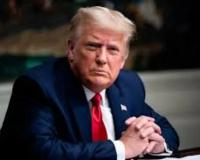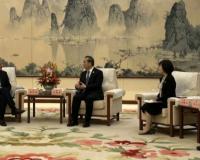Argentina Economy Crisis; Milei End Strict Currency and Capital Controls, What It Means?

President Javier Milei promised Argentinians that an economic revival would follow the pain of harsh austerity.
Nitin Sindhu VY | April 16, 2025
The International Monetary Fund (IMF) disbursed the first installment of Argentina’s new $20 billion loan program on Tuesday after President Javier Milei lifted most of the country’s strict capital and currency controls. These restrictions, in place for years, had fixed the official exchange rate and limited the free movement of money for businesses and individuals.
With the IMF deal secured, Milei took the bold step of dismantling the controls, betting that the move will stabilize Argentina’s volatile economy and pave the way for recovery after months of austerity measures.
At a press conference alongside U.S. Treasury Secretary Scott Bessent, Milei declared Monday—the day controls were lifted—Argentina’s version of “Liberation Day,” echoing former U.S. President Donald Trump’s rhetoric.
“After 15 years of capital controls, we have cast off the anvil to which we were chained,” Milei said.
What Were Argentina’s Currency Controls?
First imposed in 2011 under then-President Cristina Fernández de Kirchner, the measures—known locally as “el cepo” (the trap)—were designed to prevent capital flight by restricting access to foreign currency.
Until this week, the rules made it nearly impossible for companies to send profits abroad and for citizens to buy dollars. This led to a collapse in foreign investment, drained central bank reserves, and created multiple exchange rates alongside a thriving black market.
The official exchange rate last Friday was 1,097 pesos per dollar, while the black market rate reached 1,375 pesos. Many Argentines, distrusting their own depreciating currency, preferred saving in physical dollars stashed at home.
Milei had maintained a controversial “crawling peg” system, limiting the peso’s monthly decline against the dollar to 1%. Analysts say this was meant to curb inflation, Milei’s key political promise.
Why Lift Controls Now?
Defending the peso’s artificial peg had become unsustainable, costing the central bank $2.5 billion since mid-March.
To prevent a peso collapse, Milei secured new credit lines—$12 billion from the IMF, additional funds from multilateral banks, and a $5 billion swap with China.
With controls gone, the peso now floats freely within an initial range of 1,000–1,400 per dollar. On Tuesday, it stabilized around 1,230, close to the prior black market rate.
Impact on Ordinary Argentines
Milei scrapped a $200 monthly cap on dollar withdrawals and removed transaction fees, allowing bank-account holders to freely purchase dollars for the first time since 2019. However, exchanging pesos for more than $100 in cash remains restricted to discourage black market trading.
Many Argentines rushed to convert pesos to dollars, fearing further depreciation. Yet for workers in the informal economy—about half the workforce—the changes brought little immediate relief.
Effect on Businesses
While most corporate capital controls remain, foreign firms can now repatriate profits starting in 2025 (though not past earnings). Experts say the reforms could encourage investment.
Exporters, particularly in agriculture, stand to benefit as a freely traded peso makes their goods more competitive.
Global Implications
U.S. Treasury Secretary Bessent praised Milei’s reforms, drawing parallels between Milei and Trump’s economic policies. However, Argentina’s long-term stability remains uncertain.
For now, Milei’s gamble marks a turning point—but whether it leads to recovery or further turmoil is yet to be seen.
About The Author












